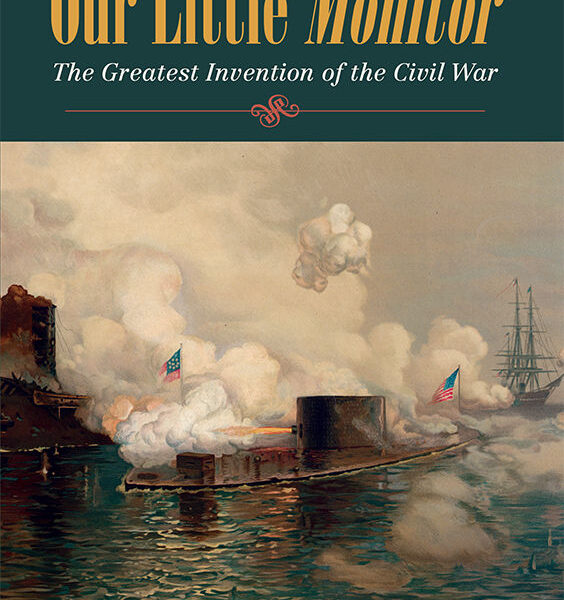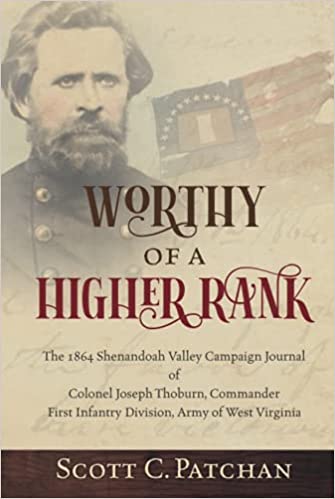Through the Heart of Dixie: Sherman’s March and American Memory by Anne Sarah Rubin. University of North Carolina Press, 2014. Cloth, ISBN: 978-1469617770. $35.00.
 The men of William Tecumseh Sherman’s army covered many miles on their grand tour of Georgia and the Carolinas. In rearview, they’d left incalculable damage, both physical and emotional, upon the Confederate heartland: homes destroyed and fields ravaged, slaves compelled to break for freedom, untold quantities of livestock confiscated and butchered, churches desecrated, and graveyards vandalized. But in March 1864, when Union soldiers and their commander considered their “March to the Sea” complete, another series of battles—to codify how Sherman, his men, and their destructive handiwork should and would be remembered—was only beginning.
The men of William Tecumseh Sherman’s army covered many miles on their grand tour of Georgia and the Carolinas. In rearview, they’d left incalculable damage, both physical and emotional, upon the Confederate heartland: homes destroyed and fields ravaged, slaves compelled to break for freedom, untold quantities of livestock confiscated and butchered, churches desecrated, and graveyards vandalized. But in March 1864, when Union soldiers and their commander considered their “March to the Sea” complete, another series of battles—to codify how Sherman, his men, and their destructive handiwork should and would be remembered—was only beginning.
Anne Sarah Rubin’s Through the Heart of Dixie: Sherman’s March and American Memory is a unique book; in many ways, it functions as the “military history” of a campaign for memory. And while the cachet of Sherman’s March likely rivals Pickett’s Charge and Lincoln’s assassination in the American historical consciousness, relatively few historians have examined the trek from Georgia to the Carolinas with a specific emphasis on social memory. This lack of attention is surprising when we consider, as Rubin correctly notes, how clearly the March reflected the broader war in miniature: the army, total war, larger-than-life commanders, violence on the homefront, and issues of emancipation all rolled into one saga. In other words, a book like Rubin’s is both timely as the sesquicentennial of the March approaches and long overdue.
Following a useful summary of the March and its logistical underpinnings, the opening chapters provide a sweeping survey; collectively, they illustrate how different demographics recalled their experiences and the extent to which these narratives correlated with larger social and political agendas in postbellum America. From impenitent Union soldiers to disgruntled southern civilians to enslaved African Americans, sifting through these accounts is indeed necessary to our understanding of the March. Here, the inner cogs of the memory machine are laid bare. Rubin draws a direct connection between the events of the past and how they have been utilized to assuage the commemorative needs of the present. That said, this section of the book might have benefitted from at least a brief comparison of Sherman-centric memories to the relationship between other armies and their civilian victims. This juxtaposition could have helped to clarify whether or not the tropes typically affiliated with the March were actually unique to it—or if such novelty really even mattered in the minds of those who participated in the campaign firsthand.
Chapters Five and Six are, in more ways than not, the heart of the book. In Chapter Five, “Uncle Billy, the Merchant of Terror,” Rubin deals specifically with Sherman’s own memories of the March and the personal role he played in determining how it would be enshrined for posterity. Sherman’s attempts to boost his commemorative profile are both fascinating and revealing. On one hand, he offered varying excuses to detach himself from the burning of Columbia, South Carolina, and went out of his way to appear sympathetic to the plight of white Columbians, especially women. On the other hand, Sherman refused to relinquish support for Jeff Davis (the other one, as Rubin points out in the text), his subordinate who had overseen the heinous treatment of African Americans at Ebenezer Creek. In addition to treating readers to bids for commemorative supremacy between Sherman and the likes of Edwin Stanton and former Confederate President Jefferson Davis, Rubin also explores Sherman’s return to post-war Atlanta as a tourist. His reception there—however careless he might have been with matches in the past—laid the foundation for a bizarre scenario in which Sherman functioned as a booster for the New South he’d helped forge with flame.
Chapter Six, “On Sherman’s Track,” analyzes the work of various travel writers who followed the path of the March. Rubin’s reading of these narratives, which range from the Reconstruction era to the present, again underscores the raw social and political potential of memory—especially concerning race relations. As Rubin rightly suggests, the earliest of these accounts, whichever side they took, were not merely descriptions of burned out homes, twisted rail ties, or missing silverware; rather, they were records of the war’s immediate aftermath and its longer-term consequences (read: freedmen) designed to influence the legacies of Emancipation and the men who helped trigger it, intentionally or not. Through her assessment of Centennial coverage in the 1960s, Rubin also unpacks how white supremacist takes on Sherman and the March evolved alongside their cause: explicit criticism of the March and of freedmen gradually gave way to ignoring Sherman outright as a more subtle measure of massive resistance. Subsequent chapters address how these developments permeated the mediums of film, poetry, and literature.
In the process of praising a scholarly monograph, this would typically be the moment when a reviewer slightly tempers the book’s “impact” by citing its poor prospects for engagement with the non-academic public. It remains to be seen whether or not digital history can fulfill its promise and recruit new audiences, but thanks to “Sherman’s March and America: Mapping Memory,” this might not be the case for Rubin’s work. Entirely free to the public and boasting an impressive array of interactive maps, this web project allows visitors to visualize how different demographics have remembered the March, and how its commemorative uses—from tourism to fictional literature and film—have changed over time.
Given the book’s emphasis on tracing the place of the March in American memory and how those memories ultimately inform contemporary issues, the most noticeable trouble spot arises in the form of Rubin’s discussion of Sherman’s tactics and modern day terrorism. While takes on the matter will undoubtedly cover a wide spectrum, the notion that “Uncle Billy” is inherently exempt from terrorist status because he operated during wartime with the sanction of his government (and that his martial activities ended with the war) is rather problematic. In many more ways than not, these same disqualifying characteristics might also apply to the actions of a Sherman contemporary like William Clarke Quantrill—a surefire candidate for terrorist of the year in 1863—as well as those of a German SS operative during World War II or of more recent insurgents operating in Africa and the Middle East. At the very least, however, Rubin has prompted a discussion that will force historians to continue honing how we understand and communicate the war on twenty-first-century terms.
Overall, the mark of a worthwhile text on memory is that it illuminates the role(s) its topic has played in the ongoing construction of the American experience. Through the Heart of Dixie: Sherman’s March and American Memory delivers in this regard.
Matthew C. Hulbert is a Dissertation Fellow at The Harry Frank Guggenheim Foundation, a doctoral candidate in History at the University of Georgia, and co-editor of Unfolding the Black Flag: The Civil War Guerrilla in History, Memory and Myth, which is forthcoming from the University Press of Kentucky.



